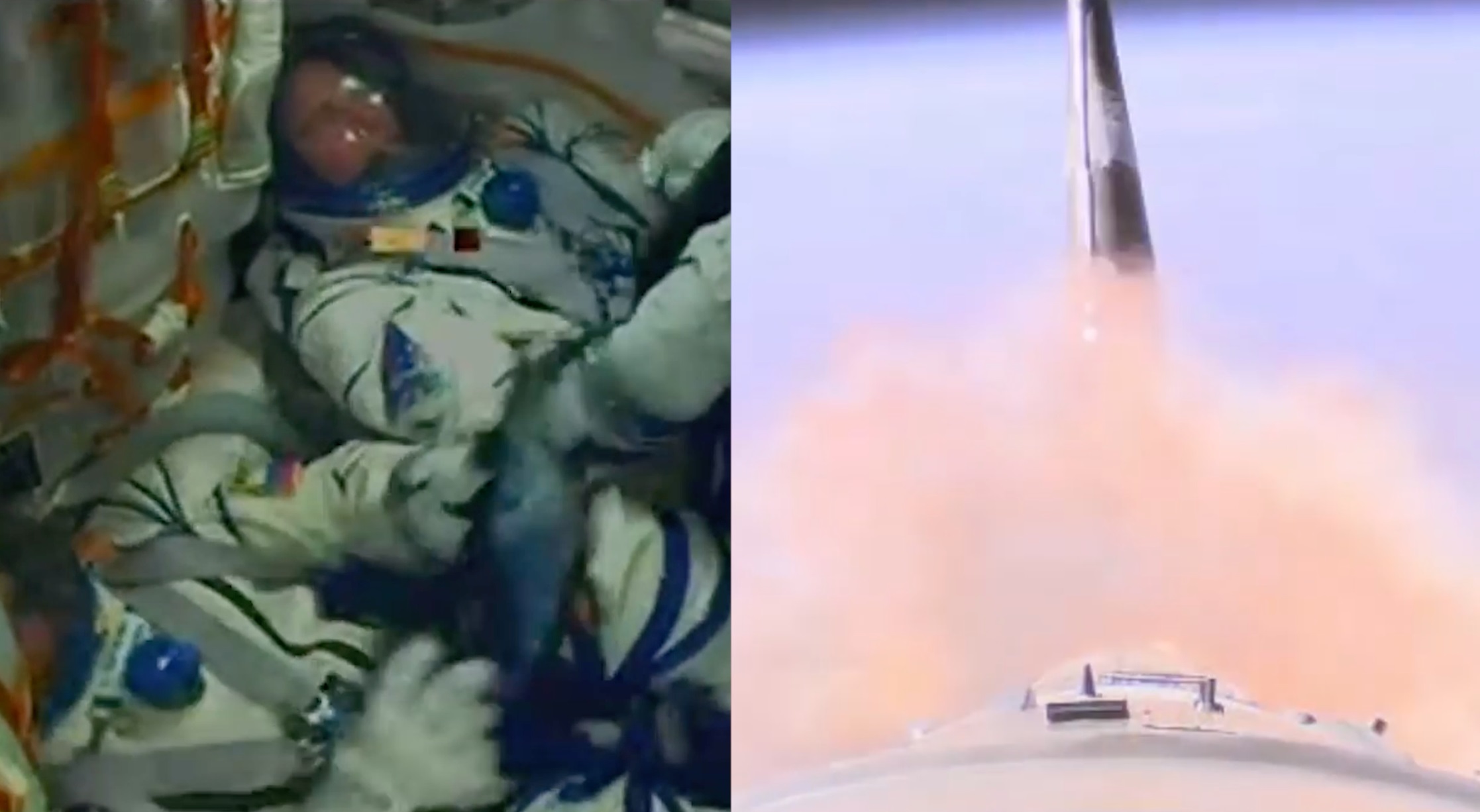Russians ID Cause of Soyuz Launch Abort, Release Dramatic Rocket Video
A deformed sensor caused the harrowing Soyuz rocket launch abort that forced its American and Russian crew to perform a emergency landing last month, Russia's space agency Roscosmos announced Thursday (Nov. 1).
Roscosmos also released dramatic video footage from the onboard camera this morning, showing a calm ascent into space interrupted by a booster separation and sudden tumbling motion.
During the conference, officials said that the abnormal separation of one of the rocket's four strap-on boosters, which hit the core booster, was caused by a nozzle cover on the oxidizer tank failing to open. According to the press statement, that impact occurred because the separation contact sensor was deformed during assembly at its Baikonur Cosmodrome launch site in Kazakhstan. [Soyuz Space Crew Launch Failure 2018: Full Coverage]
"The launch ended up with a launcher failure caused by abnormal separation of one of the strap-on boosters (Block D) that hit with its nose the core stage (Block A) in the fuel tank area," Oleg Skorobogatov, chair of the investigation committee, confirmed in the translated statement. "It resulted in its decompression and, as a consequence, the space rocket lost its attitude control."
During the aborted launch Oct. 11, the crew capusle carrying NASA astronaut Nick Hague and Russian cosmonaut Alexey Ovchinin was able to safely separate from the rocket after getting a warning signal during separation, firing engines to gain distance from the booster, according to NASA spokesperson Reid Weisman. The two took about a half hour to parachute down to Earth, where they were met by a search-and-rescue team.
Russian officials said during the press conference that they'd created measures to avoid the issue happening again, and that resuming Soyuz launches was a priority.
They added that the uncrewed Progress MS-10 cargo ship, which launches on a Soyuz-FG rocket, will fly to the space station Nov. 16, and that the next crew launch, Soyuz MS-11, will fly Dec. 3. That flight is scheduled to carry three more crewmembers to the space station, bringing the total back up to six.
Breaking space news, the latest updates on rocket launches, skywatching events and more!
The three crewmembers currently on the station will return to Earth Dec. 20, a week later than originally scheduled, Roscosmos officials said.
Email Sarah Lewin at slewin@space.com or follow her @SarahExplains. Follow us on Twitter @Spacedotcom and on Facebook. Original article on Space.com.

Sarah Lewin started writing for Space.com in June of 2015 as a Staff Writer and became Associate Editor in 2019 . Her work has been featured by Scientific American, IEEE Spectrum, Quanta Magazine, Wired, The Scientist, Science Friday and WGBH's Inside NOVA. Sarah has an MA from NYU's Science, Health and Environmental Reporting Program and an AB in mathematics from Brown University. When not writing, reading or thinking about space, Sarah enjoys musical theatre and mathematical papercraft. She is currently Assistant News Editor at Scientific American. You can follow her on Twitter @SarahExplains.

